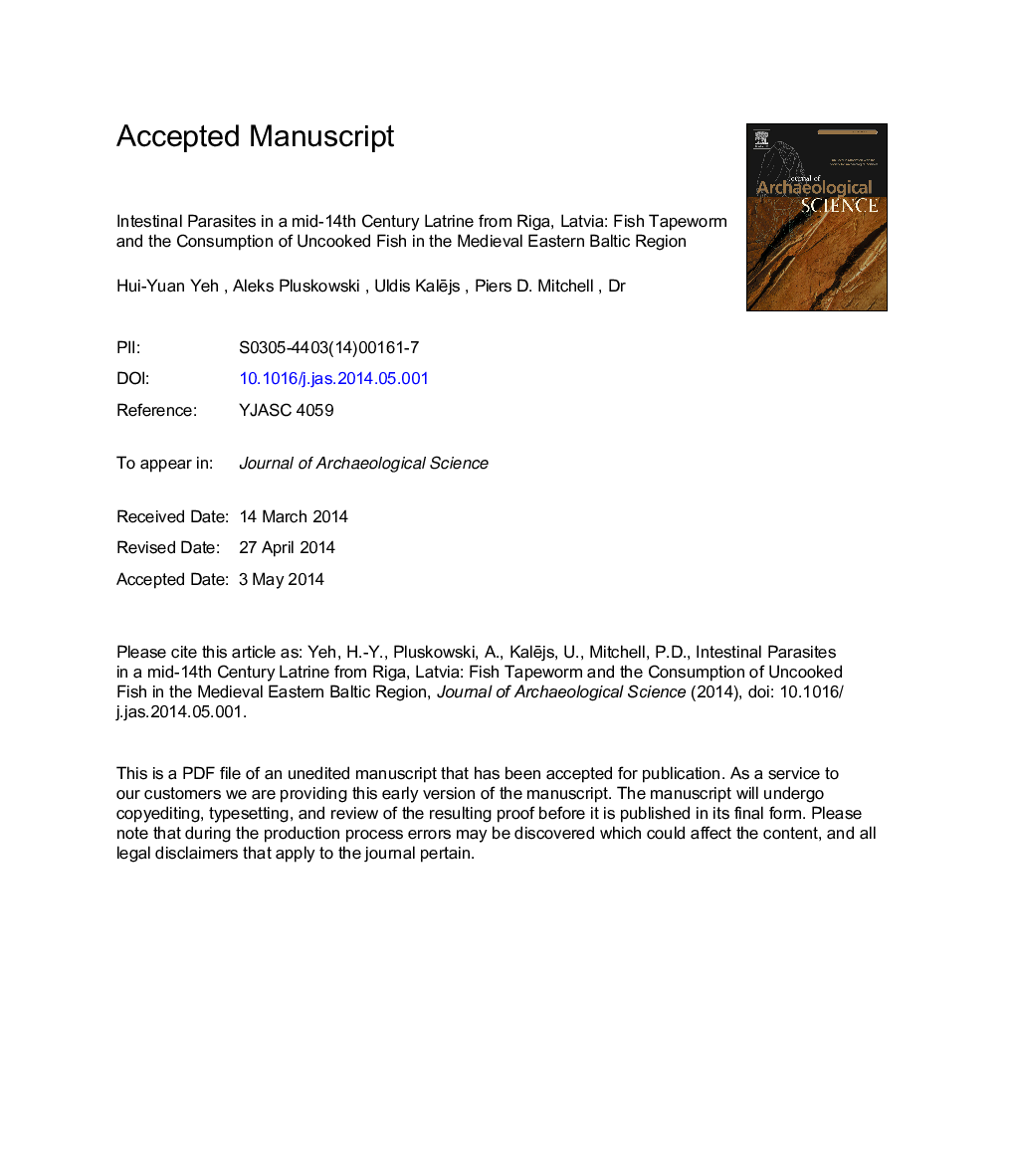| Article ID | Journal | Published Year | Pages | File Type |
|---|---|---|---|---|
| 7442930 | Journal of Archaeological Science | 2014 | 30 Pages |
Abstract
The aim of this study was to investigate faecal material from a medieval latrine in the coastal town of Riga (Latvia) in order to identify the intestinal parasites present within the population. We identified very large numbers of the eggs of three species of parasitic intestinal worms that affect humans - fish tapeworm (Diphyllobothrium latum), whipworm (Trichuris trichiura), and roundworm (Ascaris lumbricoides). The fish tapeworm evidence demonstrates that the population were eating large amounts of uncooked fish (perhaps raw, smoked, or pickled) since cooking prevents parasite transmission. ELISA analysis identified the presence of the parasite Entamoeba histolytica, which can cause dysentery in humans. We also noted two eggs of equid pinworm (Oxyuris equi) that affects horses and donkeys, demonstrating the presence of this parasite in farm animals of the region by the medieval period. We discuss the implications of these findings for our knowledge of intestinal parasites in coastal areas of the medieval Baltic region, of food consumption, of hygiene, and of the affects of the parasites upon the health of those living in medieval Riga, the most important city in the crusader state of Livonia.
Related Topics
Physical Sciences and Engineering
Materials Science
Materials Science (General)
Authors
Hui-Yuan Yeh, Aleks Pluskowski, Uldis KalÄjs, Piers D. Mitchell,
